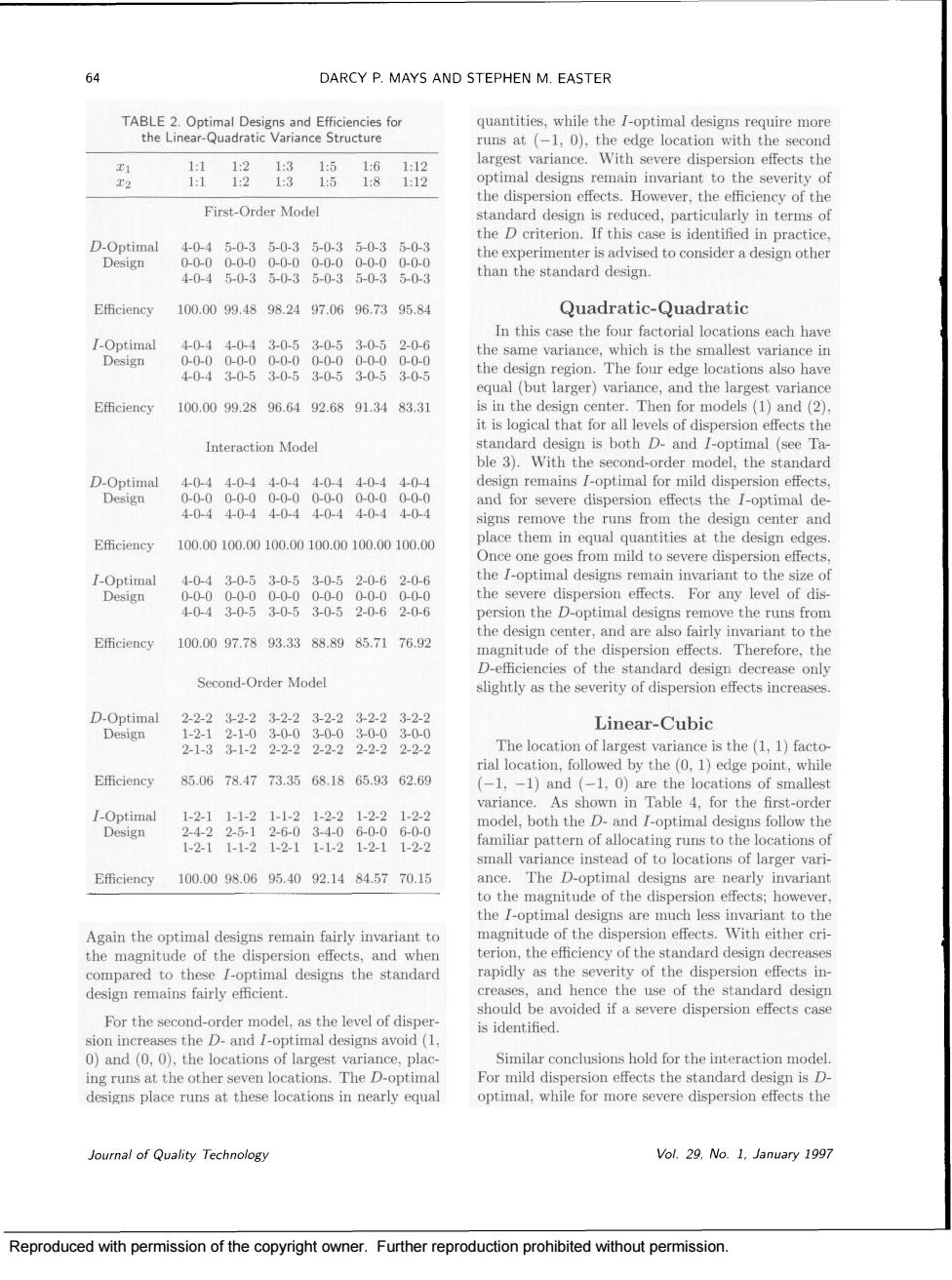正在加载图片...

64 DARCY P.MAYS AND STEPHEN M.EASTER quantities,while the I-optimal designs require more the uns at (-1,0),the edge location with the second the dispersion effects.However,the efficiency of the First-Order Model tandarddcsigasteducedparticuaryinterms D the experimenter is advised to consider a design other than the standard design. Efficiency 10.0099.4898.2497.0696.7395.8 Ouadratic-ouadratic In this the fou rial locati each ha I-8en the same variance,which is the smallest variance in the design region.The four edge locations also have Efficiency 10.0099.2896.6192.6891.3483.31 arger)variance,.and the】 it is logical that for al eves of dispersion effects the Interaction Model standardd esign is both and for severe dispersion effects the I-optimal de the runs from the design center Efficiency 100.00100.00100.0010.00100.00100.00 Once one goe from mild to severe dispersion effects ects.For any the design center,and are also fairly invariant to the Efficiency 100.0097.7893.3388.8985.7176.92 nemnteofthetpenaic Therefore,the Second-Order Model Linear-Cubic 2-1-31-22-2-222-22-2-22-2-2 () Effciency85.0678.4773.3568.1865.9362.69 (1.-1)and (-1,0)are the locations of smalles the mall iance instead of to locations of larger vari Efficiency100.0098.0695.4092.14845770.15 nce The D-optimal designs are nearly invarian heeomagiiwde much less variant to the magnitude of the dispersion effects.With either cri ticiencyoftheatanrdarddesigdecre and heuce the use of the standard desig Por the c-order model should be avoided if a severe dispersion effects case cethe lociarly optimal,while for more severe dispersion effects the ournal of Quality Technology Vol.29.No.1.January 1997 Reproduced with permission of the copyright owner.Further reproduction prohibited without permission. Reproduced with permission of the copyright owner. Further reproduction prohibited without permission